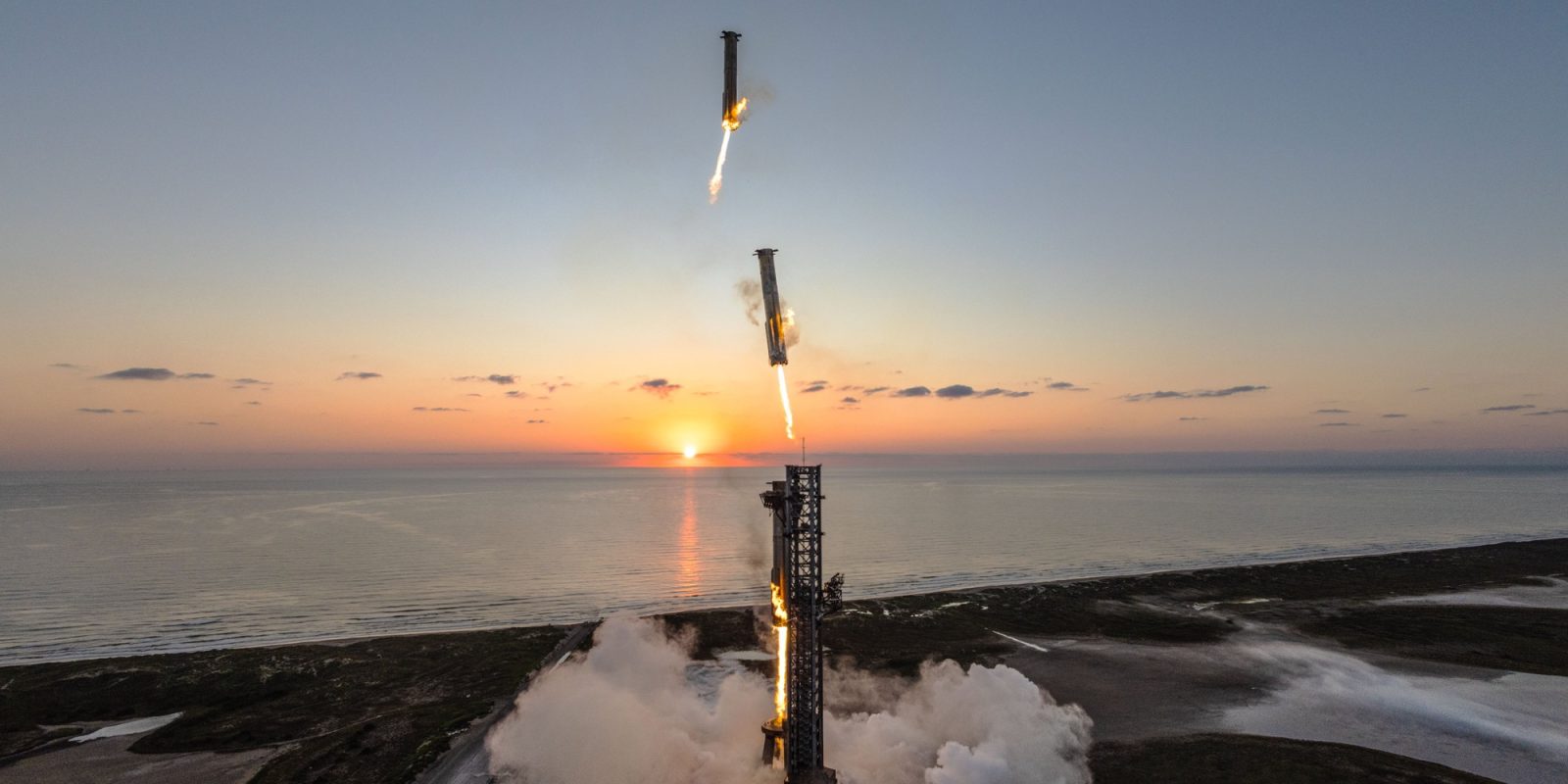
Sunday, SpaceX successfully launched and caught its Starship booster down in Starbase, Texas. A feat that many didn’t think would come true when watching the renders. However, SpaceX once again defied the odds and made fiction a reality and can now move on with its much more ambitious Starship plans.
SpaceX launched its Flight 5 Starship mission Sunday morning at 7:25 A.M. CDT on a similar suborbital trajectory from previous missions. The big change this time around came in the recovery of the vehicle’s booster and Starship’s heat shield for reentry.
In what is a night-and-day difference from what SpaceX did on Flight 1 of Starship, Flight 5’s vehicle lifted off from its Boca Chica Beach launch site, completed a successful hot staging, and began flying its booster back to the launch pad.
Then take what you’ll see during a Falcon 9 RTLS landing but scale the size up by ~100 and the craziness by 1,000 as the Super Heavy booster gracefully slid into place between the launch pad’s two arms called “chopsticks,” and came to rest.
The booster, known as Booster 12, is now back on the orbital launch mount and is likely to be taken back to the production facility for checkouts. The goal for SpaceX’s new recovery system versus using landing legs like those on the Falcon 9 is rapid reusability, being able to turn the booster around in hours or days, not weeks.
Getting the rocket launched into space and the booster returning were major milestones for Starship’s development. The FAA’s last-second license for the launch authorized at least one more flight, Flight 6, if it uses the same trajectory. The administration has stated that changes for Flight 6’s launch have already been approved, but there is no word on what that might be. So, another launch by the end of the year or early 2026 could be possible.
For the Starship upper stage, the vehicle successfully flew its flight plan into space, reentered, and splashed down in the Indian Ocean. The ship survived reentry much better this time around, thanks to SpaceX’s changes to the heat shield.
This test went as well as SpaceX could have hoped, and many of us still can’t believe the catch worked the first time.
Now SpaceX will need to focus on operating the Starship upper stage in space, refueling it, landing it back on Earth and the Moon, and learning how to launch dozens of times a day. Nothing a few billion more dollars can’t figure out.
FTC: We use income earning auto affiliate links. More.




Comments